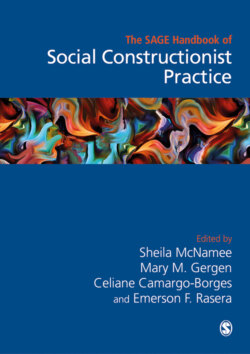Читать книгу The Sage Handbook of Social Constructionist Practice - Группа авторов - Страница 85
На сайте Литреса книга снята с продажи.
Achievements and Aspirations
ОглавлениеPerformative work radically alters the definition of knowledge and research. In doing so, it functions subtly within the academy to gradually expand consciousness of possibilities. And with this shift, the potential contribution of the social sciences to society is substantially increased. Unlike traditional empiricists, typically absorbed by testing abstract hypotheses or observing society from the sidelines, performative inquiry can actively create change. A performative consciousness prompts asking such questions as, ‘Who is this research for?’ ‘Will this research help to make a change for the better?’ It is ultimately a matter of communicating with full potentials to all peoples. In this way, the distance between the academy and the community is diminished and scholars become more fully engaged in the life-worlds about them.
Its capacity for engagement further means that performative work establishes the grounds for dialogue within society. Traditional scientific writing speaks down to society, positioning itself as authoritative and legitimate, over and above the views of the audience. In contrast, when communicating with forms of theater, poetry, film, or photography – all common in society – the scholar is often using culturally familiar forms of communication. Because no claims are made to The Truth, the audience can approach performance work not defensively, but with more openness to what is presented. The conditions are thus established for dialogic interchange. To be sure, performance pursuits may express a particular point of view, often passionately. Yet the very fact that the expression is performative informs the audience that the message is an artifice – crafted for the occasion. One may compare this with traditional empirical work, in which researchers do all they can to suppress their personal investments. While making declarations about the real and the good, performance work simultaneously removes the gloss ‘is true’. Performative pursuits continuously remind us that everything remains open to dialogue.
Much more can be said about the potentials inhering in the performative movement. As discussed, by using the arts to socially construct the world, new and exciting vistas of theory and research are opened up (see, for example, Rolling, 2014). And, because performative inquiry does not require that disciplines be defined in terms of pre-fixed objects (e.g. the mind, society, the family, the community), disciplinary boundaries can be crossed more easily. New research territories can also be created, as evidenced in the way performance researchers take up issues in post-humanism, and the new materialism (Barad, 2007; Bennett, 2010; Braidotti, 2013; Haraway, 2016). Increasingly, academic cultures are invited into mutual exploration with mixed-methods and research innovations encouraged. One may now envision a future in which concerns with the philosophical and aesthetic origins of research inquiry will be replaced with questions of how one's research practices can best serve one's purposes. Resistance to performative work will remain, but critical reflection is also healthy. At this point in time, however, the vistas of possibility are irresistibly inviting.
